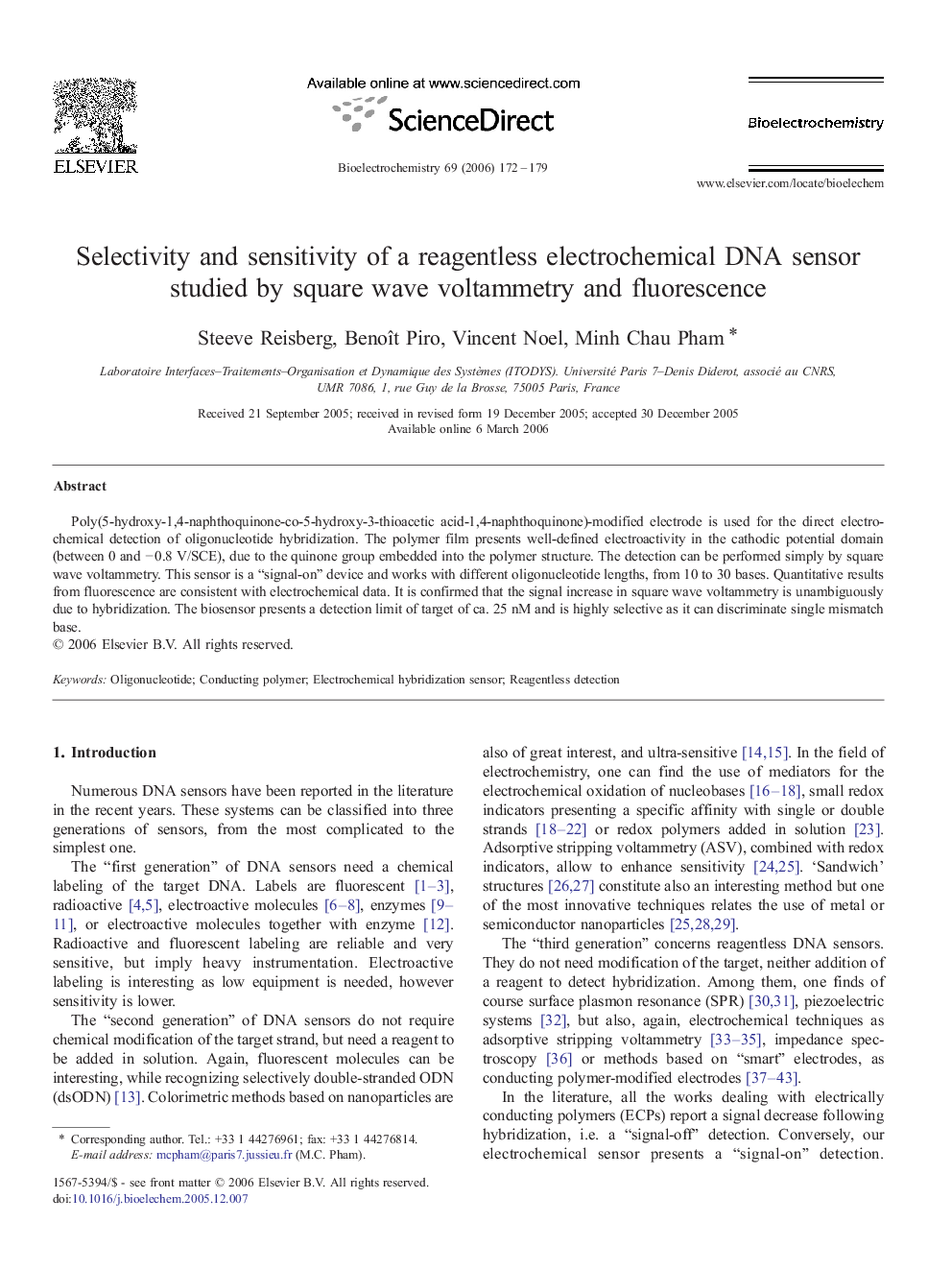| Article ID | Journal | Published Year | Pages | File Type |
|---|---|---|---|---|
| 1269417 | Bioelectrochemistry | 2006 | 8 Pages |
Poly(5-hydroxy-1,4-naphthoquinone-co-5-hydroxy-3-thioacetic acid-1,4-naphthoquinone)-modified electrode is used for the direct electrochemical detection of oligonucleotide hybridization. The polymer film presents well-defined electroactivity in the cathodic potential domain (between 0 and − 0.8 V/SCE), due to the quinone group embedded into the polymer structure. The detection can be performed simply by square wave voltammetry. This sensor is a “signal-on” device and works with different oligonucleotide lengths, from 10 to 30 bases. Quantitative results from fluorescence are consistent with electrochemical data. It is confirmed that the signal increase in square wave voltammetry is unambiguously due to hybridization. The biosensor presents a detection limit of target of ca. 25 nM and is highly selective as it can discriminate single mismatch base.
